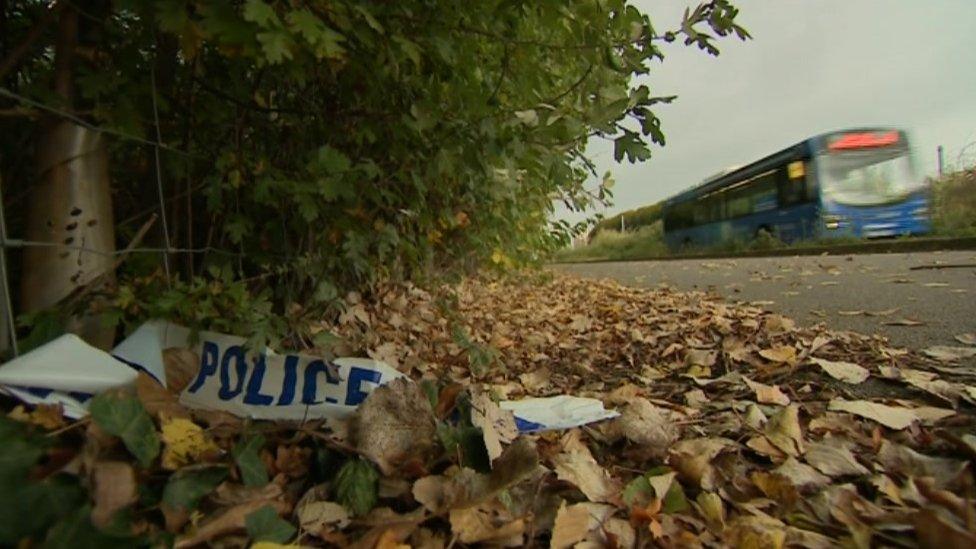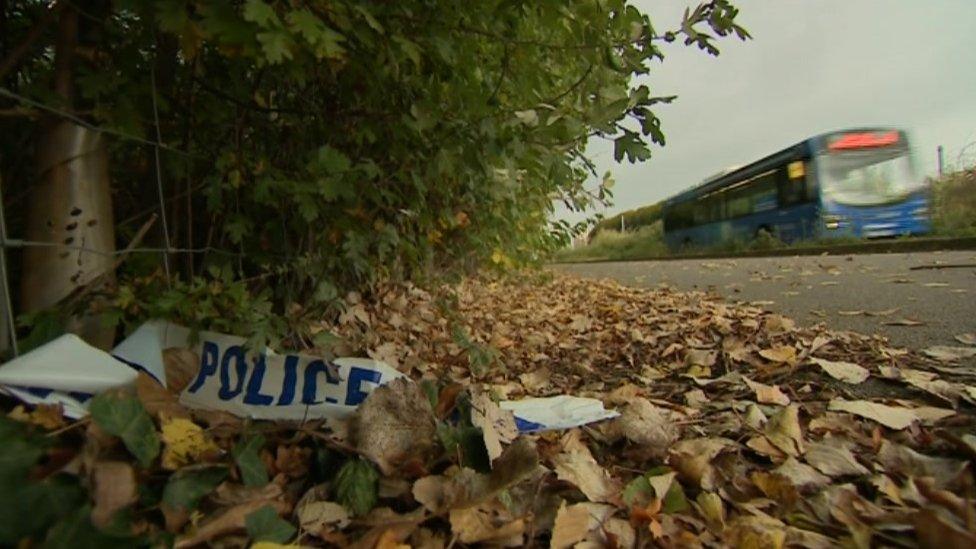Cambridgeshire guided busway safety fears raised in review
- Published

Kathleen Pitts died after being struck between Cambridge railway station and Long Road earlier this year
Safety fears have been raised in a review into a guided busway following the death of pedestrian.
Cambridgeshire County Council commissioned a review after the death of Kathleen Pitts, 52, who was killed in Cambridge on 26 October.
Engineering firm Mott MacDonald has recommended new and better signage, a permanent lower speed limit, and improved track maintenance.
It advised against a permanent barrier between the track and adjacent walkway.
Liberal Democrat councillor Alex Beckett, chair of the council's highways and transport committee, said the authority had "already implemented many of the recommendations".
Ms Pitts was struck on the section between Cambridge railway station and Long Road, the same stretch that cyclist Steve Moir was killed on in 2018.

Steve Moir and Kathleen Pitts were killed on the same section of busway
In November 2015, 81-year-old Jennifer Taylor died as she tried to cross the guided busway with her husband at Fen Drayton.
Mr Moir's family called for an urgent safety review following the latest collision and the council asked Mott MacDonald to analyse the busway.
The firm found a number of problems, including insufficient warning advice at all pedestrian and cyclist crossing points and worn road markings at all vehicle entry points.
The review further stated: "The assessment team consider that vehicle speeds which exceed 30mph (48km/h) are incongruent and inappropriate within an urban area where significant pedestrian and cyclist activity occurs."
It also warned that at a section in Fen Drayton "inappropriate crossing provision may lead to collisions involving crossing users".
It found guided bus approaches to junctions and crossings were heavily worn, adding the ability of buses to brake effectively "may be diminished, increasing the likelihood of a bus failing to stop, increasing the risk of collisions".
It also stated a "physical fence would not be a long-term practical intervention as a fence would restrict bus occupants evacuating a guided bus in case of an incident".
Mr Beckett said: "Following Mott's reports, we have already implemented many of the recommendations, such as a 30mph (48km/h) speed limit on the whole southern section.
"Many of the markings, signs and high-friction surfacing will be complete by the end of August. We are also looking at opportunities to improve the quality of cycling and active travel provision along the maintenance track."
He said discussions were taking place with the Health and Safety Executive about removing a temporary fence on the busway's southern section.

Find BBC News: East of England on Facebook, external, Instagram, external and Twitter, external. If you have a story suggestion email eastofenglandnews@bbc.co.uk, external
- Published22 December 2021

- Published26 November 2021

- Published10 November 2021

- Published4 November 2021

- Published27 October 2021

- Published19 November 2020
